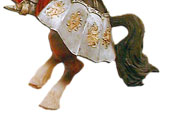Our location in Mainz: Molenkopf im Winterhafen am Victor Hugo Ufer

 Mainz in the 20th century Mainz in the 20th century
After the end of World War I, Mainz was occupied by the French between 1919 and 1930, according to the Treaty of Versailles, which went into effect June 28, 1919. The Rhineland (in which Mainz is located) was to be a demilitarized zone until 1935, and the French garrison, representing the Triple Entente, was to stay until reparations were paid.
The reparations were not paid and Germany preferred to wreck its economy through inflation than to pay them. In 1923 Mainz participated in the Rhineland separatist movement, which proclaimed a republic in the Rhineland. It collapsed in 1924. The French withdrew on June 30, 1930. Adolf Hitler became chancellor of Germany in January, 1933. His political opponents, especially those of the Social Democratic Party, were either incarcerated or murdered. Some were able to move away from Mainz in time. One was the political organizer for the SPD, Friedrich Kellner, who went to Laubach, where as the chief justice inspector of the district court he continued his opposition against the Nazis by recording their misdeeds in a 900-page diary.
In March, 1933, a detachment from the National Socialist Party in Worms brought the party to Mainz. They hoisted the swastika on all public buildings and began to denounce the Jewish population in the newspapers. In 1936 the forces of the Third Reich reentered the Rhineland with a great fanfare, the first move of the Third Reich's meteoric expansion. The former Triple Entente took no action.
During World War II the citadel at Mainz hosted the Oflag XII-B prisoner of war camp.
The Bishop of Mainz formed an organization to help Jews escape from Germany.
During World War II, more than 30 air raids and bomb attacks destroyed about 80% of the inner city of Mainz, including most of the historic buildings. Mainz fell on March 22, 1945, to XII Corps, 90th Division, of the Third Army under the command of General George S. Patton, Jr. The forces of the 3rd Reich were defending it against a possible Rhine crossing there. It was the end of the Palatinate campaign. Patton used the ancient strategic gateway through Germania Superior to cross the Rhine south of Mainz, drove down the Danube through Czechoslovakia, ending the possibility of a Bavarian redoubt, and crossed the Alps into Austria, when the war ended. With regard to the Roman road over which Patton attacked Trier, he said:
"one could almost smell the coppery sweat and see the low dust clouds where those stark fighters moved forward into battle." (George S. Patton, War as I Knew It)
From 1945 to 1949, the city was part of the French zone of occupation. When the federal state of Rheinland-Pfalz was founded on 18 May 1947, Koblenz was the temporary capital; in 1950 Mainz became the capital of the new state. In 1962, the diarist, Friedrich Kellner, returned to spend his last years in Mainz. His life in Mainz, and the impact of the Friedrich Kellner Diary, is the subject of the Canadian documentary My Opposition: the Diaries of Friedrich Kellner.
Quelle: www.wickipedia.de |
|

